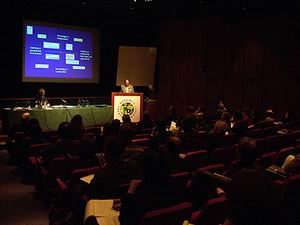Collecting and society
Pressures on nature
Saving the planet
There are many threats to our biodiversity and environment. What is the Museum doing to combat them?
Most of us are aware of threats such as global warming and deforestation. But there are also more subtle pressures on our biodiversity. There are not enough scientists studying biodiversity and helping to plan for its preservation.
The scale of the collections means that we can make comparisons across a large number of specimens. We vigorously develop the collections, adding thousands of specimens to them each year. This maintains and enhances their use as a powerful knowledge resource.
The Earth Summit in Rio in 1992 identified a major problem to be the shortage of trained taxonomists around the world.
Ratification of the Rio agreement placed an obligation on countries to study their biodiversity. We are helping many governments around the world meet their obligations by participating in research projects with local scientists.
Educate
There are more taxonomists retiring than joining the profession. We must pass on our knowledge and skills by educating the next generation of taxonomists.
The Museum plays an active part in education. Our public galleries, and the Darwin Centre itself, are an important part of this work.

Find out more about:
 |
Training through research
We educate through our research, for example raising local knowledge of botany in Central America through the Flora Mesoamericana project. |
We also participate in formal education. With Imperial College, we run an MSc course on taxonomy, and supervise many PhD students here and abroad. Over 70 of our scientists lecture on university courses.
Raising awareness
Taxonomy is the bedrock of biological research. Without it, research in many other areas would grind to a halt.
Part of our work is to raise awareness of the importance of taxonomy to science, both in the UK and abroad. We work to raise awareness with governments and funding bodies, as well as the media and general public.

Across the world, basic taxonomy is under-funded compared to other areas of science. The Museum aims to encourage greater recognition of this crucial science.